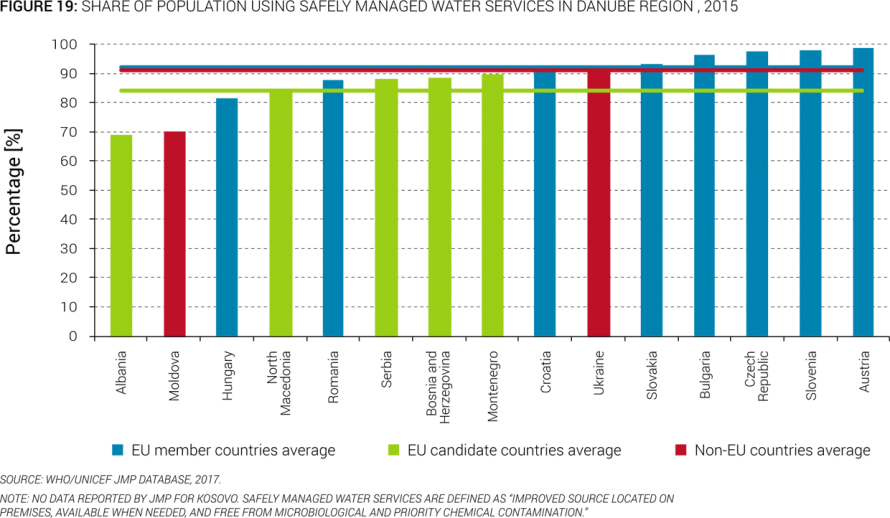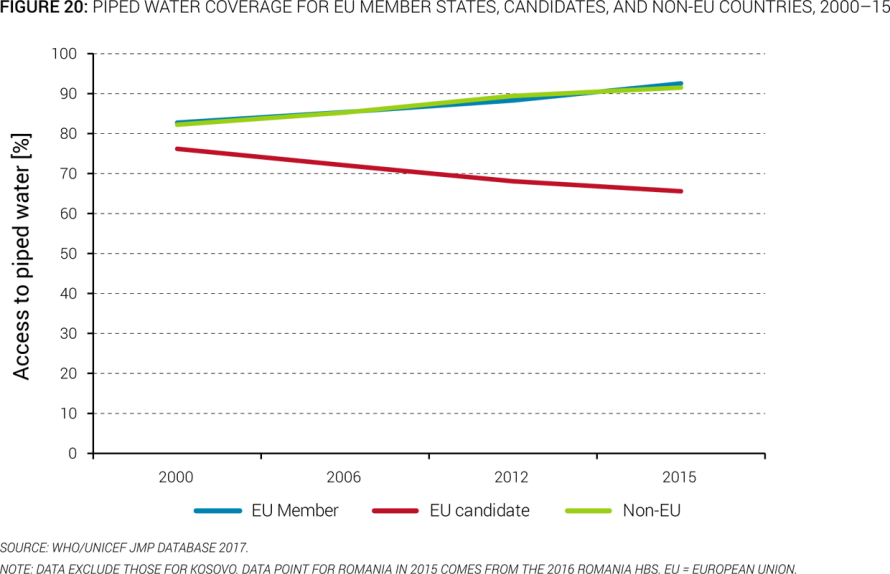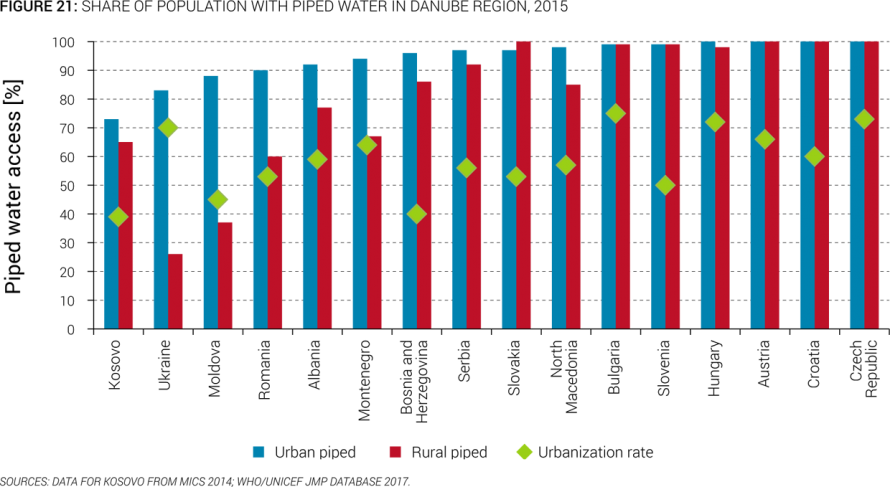A. Water
46. Half of the countries in the region provide at least 90 percent of their inhabitants with safely managed drinking water services. SDG 6.1 (see Box 5, Table B5.2) targets that, by 2030, universal and equitable access to safe and affordable drinking water for all is achieved. This objective is being monitored through a dedicated indicator that reports the proportion of population using safely managed drinking water services.20 According to the data gathered by WHO/JMP, half of the countries in the Danube region provide more than 90 percent of their population with safely managed water services (Figure 19). Unsurprisingly, all European Union (EU) member states, with notable exception for Hungary and Romania, are among these countries. Albania and Moldova are lagging with less than 70 percent of their population having access to safely managed water services.
47. Household coverage with piped water has increased in most countries from the Danube region, from an average of 80 percent in 2000 to 83 percent in 2015, with a few notable exceptions. In most EU member states, piped water coverage was already high in 2000 and continued to increase steadily until 2016. Romania is the only EU country lagging with 76 percent of piped access in 2016 (HBS 2016). Moldova is making efforts to catch up with a 20 percent increase in piped access from 2000 to 2015. In addition, data reported by the Kosovo Water Services Regulatory Authority through its annual water sector reports show a 10 percent increase in public drinking water services between 2014 (84 percent) and 2017 (94 percent), underlying the priority that the water sector has in the government’s agenda. According to JMP estimates, access to piped water has been reduced in Ukraine (from 68.6 percent in 2012 to 66.0 percent in 2015) and Montenegro (from 85.6 percent) in 2012 to 84.2 percent in 2015),21 which may be explained by weak operation and maintenance practices and lack of operational cost recovery in these countries for the replacement of broken pipes. Figure 20 also shows the persistent gap between EU member and candidate countries and their less EU-integrated peers in the east.
48. Much lower coverage in rural areas is driving overall coverage down in some countries. Most EU countries, with the notable exception of Romania, exhibit nearly 100 percent piped water access irrespective of location (see Figure 21), and even poorer countries, such as Bosnia and Herzegovina, Serbia, and North Macedonia, show a low access gap between rural and urban residents, though with perhaps higher reliance on service providers other than public utilities. Yet, access to piped water by rural residents is half or less of urban coverage in Moldova, Romania, and Ukraine, which also have the lowest average access to piped water.
49. Although the gap in access to piped water supply is slowly closing, increasing access to piped water supply remains a challenge for all Danube countries, especially in less densely populated areas. Access to piped water in the region has increased from 81 percent to 83 percent as estimated by JMP in 2017. The estimated number of people without access to piped water in the Danube region decreased by about 2 million during the period, underlying government efforts to expand access to water services. Most of this increase is driven by better access rates seen in Romania, Serbia, and Moldova. This overall moderately positive trend, however, hides less positive developments in some other countries. In Ukraine, according to JMP estimates, about 1 million people lost access to piped water from 2012 to 2015. This underlines the importance of good asset management and operations and maintenance (O&M) capacity needed by service providers. Overall, lack of access to piped water is largely a phenomenon of rural or less densely populated settlements, which typically lack the economies of scale and political voice to cost-effectively provide network services through modern infrastructure.



